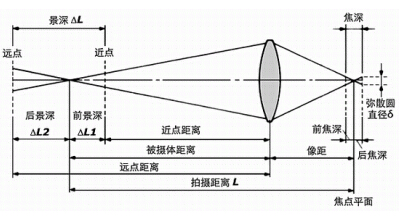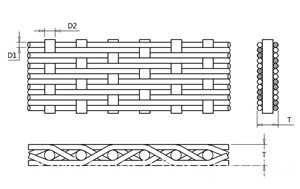Stainless Steel Twill Dutch Weave Mesh
Stainless Steel Twill Dutch Weave Mesh, this kind of woven steel mesh is weaved
by a special weave technology, which integrate the
Dutch weave and twill weave. The thicker
warp wire and the thinner weft staggered. Each warp wire shuttles up and down with
the weft wire.
Features: Stainless steel wire mesh screen has the
advantages of smooth surface, high hardness, constant mesh, no deformation,
high temperature resistance, corrosion resistance, flexible network, excellent
filtration performance, good filtration accuracy, high load intensity, high temperature
resistance, low temperature resistance and so on
Material: SS304, SS 316,SS316L
Use: Stainless Mesh is mainly used for gas,
liquid filtration and other medium separation; widely used in precision
pressure filter, fuel filter, vacuum filter, filter material, do aerospace, oil
refining, pharmaceutical, sugar, oil, chemical industry, chemical fiber,
rubber, tire manufacturing, metallurgy, food, health industry and scientific
research.
Specification: The standard roll width: 1m-2m. Standard roll
length: 30-50m.The steel mesh in special width and length can be
produced according to customers` requirements.
Structural drawing:
The warp wire (D1) : all longitudinal
braided lines.
The weft wire (D2) : all horizontal weaving
lines.
Aperture : the distance between two
meridians or two weft.
Mesh number: number of mesh holes per inch.
Thickness (T) : thickness of the wire mesh.
Speciation List:
Twill
Dutch Woven Stainless Steel Mesh
SPEC
NUMBER OF
HOLES PER INCH
WIRE DIAMETER
APERTURE(micron)
80II
20mesh x 250mesh
0.28x0.2
38
120II
30mesh x 300mesh
0.25x0.18
36
200II
50mesh x 500mesh
0.14x0.11
34
320I
80mesh x 700mesh
0.11x0.08
32
320II
80mesh x 780mesh
0.10x0.07
30
360
90mesh x 780mesh
0.10x0.07
25
400I
100mesh x 780mesh
0.10x0.07
22
400II
100mesh x 900mesh
0.10x0.063
20
500
120mesh x 1100mesh
0.07x0.05
17
630
150mesh x 1400mesh
0.063x0.04
16
650
180mesh x 1800mesh
0.07x0.04
14
685
165mesh x 1400mesh
0.063x0.032
13
795I
200mesh x 1400mesh
0.07x0.04
12
795II
200mesh x 1800mesh
0.05x0.032
10
850
2l0mesh x 1900mesh
0.045x0.03
10
1000
250mesh x 2000mesh
0.045x0.028
8
1125
280mesh x 2200mesh
0.036x0.026
7
1225
300mesh x 2200mesh
0.036x0.026
6
1280
325mesh x 2300mesh
0.035x0.025
5
1600
400mesh x 2800mesh
0.03x0.018
3
Stainless Steel Twill Dutch Weave Mesh,Extra Fine Stainless Steel Mesh,Stainless Steel Screen Mesh,Twill Dutch Weave Mesh Anping Xinzheng Metal Wire Mesh Co., Ltd , https://www.sievingmesh.com
In fact, for surveillance cameras, high-definition, high-definition is indeed an important basis for high-quality imaging, but also can be considered an important hardware component of high-quality imaging. However, in addition to hardware, high-quality imaging, the setting of software is also a non-negligible aspect. Today, we come together to talk about the important impact of aperture on surveillance shooting.
The role of aperture and depth of field
When it comes to aperture, I am afraid that a friend who is a little familiar with the digital influence will not have too much strange feeling. Conceptually speaking, the role of the aperture is to control light through the lens, adjust the amount of light inside the body of a device. In terms of structure, it controls the amount of light through the polygon or circle inside the lens. Usually, we use the F value to express the aperture size.
In daily life, we will use the aperture to represent 1.0, 1.2 or 1.4. This is mainly a way of expressing the aperture size of the lens. When the F-number is smaller, the aperture becomes larger, and the amount of light transmitted by the sensor chip is also natural. Become bigger.
Having finished the aperture, we talk about the role of Jing Shen. The depth of field is a certain length of space in front of the lens. When the object is located in this space, its image on the film is located between the two converging circles before and after the focus. The length of space where the camera is located is called the depth of field. Frankly speaking, it is a clear and fuzzy distance. And if the aperture is larger, the depth of field will be closer; and the smaller the aperture, the depth of field will become longer. Therefore, in such a relationship, when the full aperture is opened in order to pass more light, the smaller the aperture of the device, its monitoring effect will become better. This is also the imaging effect of some high-resolution lenses. It is not as good as the low-resolution lens. 
Aperture and lens relations
Nowadays, in order to improve the imaging resolution of surveillance cameras, more and more devices have begun to replace CCD sensors with CMOS sensors. However, the CMOS contrast CCD's lack of sensitivity has caused headaches for many manufacturers and users. local. Therefore, many products in order to solve the CMOS sensitivity to light than CCD problems, the CMOS camera's DC interface is set to open the aperture directly to the maximum, or according to the intensity of light divided into 2 ~ 3 grade automatic adjustment. Therefore, when the amount of light is guaranteed, the effect of the lens is also the most undesirable.
Especially for surveillance cameras, its key working hours are often different from ordinary digital cameras, and dimly lit nights are important moments for such imaging products. At work, although the amount of light passing through different apertures is sometimes only a small difference. However, after the bit stream processing, this gap will be infinitely amplified, which will have a great impact on the monitoring effect, storage links, and even the entire system. Therefore, in the configuration and detection of the lens, in addition to the daily monitoring and evaluation, the work effect in the night vision environment is also very important.
How to solve the aperture dilemma of surveillance cameras
Speaking of the above problem, it can be seen that the effect of aperture size on monitoring quality is still very obvious. So, how can we get out of this dilemma?
In fact, the solution to this problem is not a complicated matter. In use, we can set the aperture of the CMOS sensor camera to the maximum and configure it with the corresponding manual iris. In this case, even if all the shortcomings after the opening of all the apertures have occurred, we can also improve the overall performance of the lens by making small adjustments to the aperture.
In addition, when we consider surveillance cameras, it is better to collect more high-end brands of cameras, and in comparison, to adjust the device's light-attenuating film to a state that is not affected too much during the day; in addition, in the selection of equipment At the same time, it is better to use a plurality of blade apertures to ensure better imaging quality.
In fact, high-quality monitoring is not difficult for us. The composition of high-quality imaging does not always have to be accomplished with high resolution or high resolution. In many cases, we only need to make some adjustments to the settings of our equipment, and we will be able to receive surprises that will surprise us. In the face of this economic approach, why would we not enjoy it? 

Nowadays, security surveillance cameras are playing an increasingly important role in our daily life. Therefore, the discussion of the performance of surveillance cameras naturally becomes the main way to improve the quality of work. However, when we talk about it, we often pay more attention to high definition and resolution. It seems that apart from these, high-quality video surveillance is insulated from us. Is this really the case?